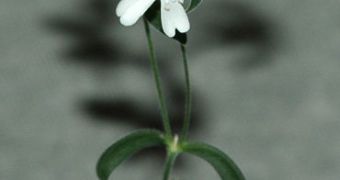In a paper published in the February 20 issue of the esteemed journal Proceedings of the National Academy of Sciences (PNAS), experts announce that they were able to grow 30,000-year-old plants from immature seeds discovered in permafrost.
The immature fruits were recovered from the Siberian tundra and proved to have remained viable for all this time. With careful and precise planning, investigators from the Russian Academy of Sciences (RAS) were able to grow plants that have been buried underground since the time of the Neanderthals.
In addition to being a remarkable achievement in and of itself, the new study is also one of the first to demonstrate that regenerating living organisms from ancient tissues is possible. This is excellent news for researchers working on reviving mammoths, for example.
According to the RAS team, the immature fruits of a plant called Silene stenophylla were buried in Siberian permafrost about 30 millennia ago. Once researchers recovered the plant tissue, they did not go about germinating it directly.
Their approach involved taking some of the immature fruit tissue and growing it in the lab, inside a nutrient-rich solution. As this happened, cells within the samples started differentiating in order to fulfill different functions. Eventually, a seedling sprung up from the nutrient solution.
“This is very exciting. These tissues are viable after, say, 30,000 years. That is very, very interesting,” comments University of California in Los Angeles (UCLA) biologist Jane Shen-Miller. She was not a part of the new study, LiveScience reports.
After the seedlings developed into small, lacy white flowers, the Russian team allowed fertilization to occur. They were surprised to notice that the process was successful. In the end, the plants bore fruit, which then went on to produce viable seeds of their own.
The implications of this are amazing. If this particular plant species had gone extinct thousands of years ago, then researchers would have just brought it back to life. This holds great promise for numerous plant species that have disappeared recently. Perhaps they can be revived also.
“It's unique to find plants that have this potential. […] To identify a few of these plants is really good. They have the DNA resources for us to study,” Shen-Miller concludes.

 14 DAY TRIAL //
14 DAY TRIAL //